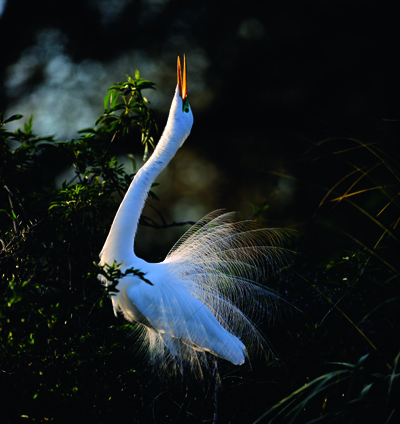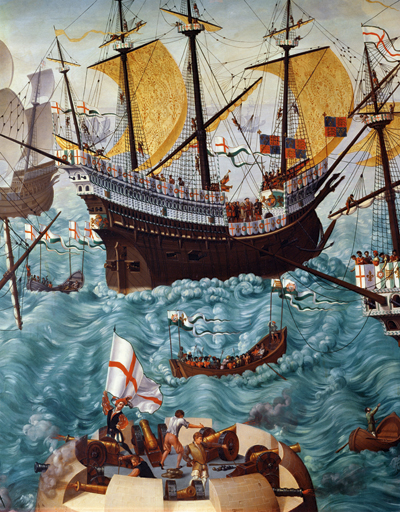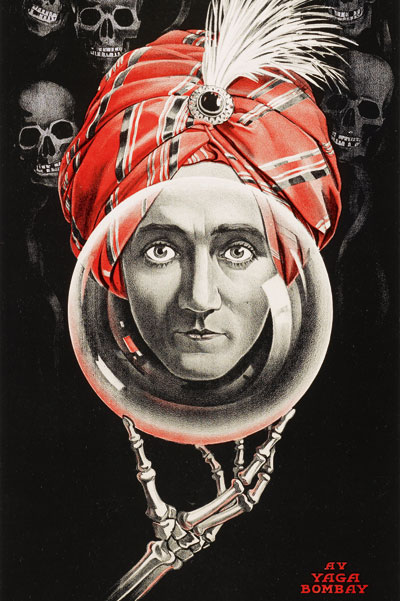‘A world without birds would lay waste the human heart,’ writes Mark Cocker. Following his Birds Britannica and prize-winning Crow Country, in Birds & People he embraces the planet, with the help of the wildlife photographer, David Tipling, and the ‘650 contributors from 81 countries’ to whom the book is dedicated. He begins his cultural celebration of the earth’s 200 recognised bird families with one of ‘the most primitive’, the partridge-like tinamou from South America. Tinamou are loth to fly, not surprisingly since once airborne they tend fatally to crash into things, even houses.
A near relative is the completely flightless common ostrich, the largest surviving bird. The ubiquity of ostrich eggs is explained by the size of the clutch, 78 a record. Only today in Africa is glass replacing ostrich eggshell as a staple of jewellery. The eggs have been used as water containers and in sacred art — as recently as 1980 15,500 were required by the Ethiopian Coptic Church.
Birds and art are immemorially entwined. There is a 30,000-year-old owl image in the Chauvet Cave in southern France; and a painting on a prepared surface of a vulture from 6,000 BC at Catalhoyuk, southern Turkey. The supreme bird culture in ancient times was Egypt’s, exemplified by its reverence of the sacred ibis, so called to this day. The bird’s white plumage and the new moon curve of its beak seem to explain why it was sacred to Thoth, the lunar deity. Cocker warns us against mocking such cults. In the USA 300 million turkeys are offered up annually every Thanksgiving and Christmas. And how many wish-bones do we pull? Wild sacred ibis were protected by order of the Pharaoh, perhaps the first example of conservation legislation.
The expertise and assistance of bird lovers attached to the global Birdlife Partnership lends weight to the book’s internationalism. They reflect the worldwide concern for the future of birds. It is not as if we have not been warned. Two pigeons, the dodo (from Mauritius) and north American passenger pigeon, symbolise man-made extinction. In the mid 19th century a migrating flock of a billion passenger pigeons was recorded, yet the last one died in 1914. The bird had become the target for trap shooters, the clay substitute arriving too late. Today 1,313 of the 10,500 bird species are on the red danger list and 197 edge on extinction. Yet in Cyprus alone the bag of migratory birds, mostly songbirds, increased between 2009 and 2011 by 86 per cent to an estimated total of 1.9 million, despite the conservation laws of the European Union.
Remarkably, given the growth of the human population (3 to 7 billion since 1960), some bird numbers are increasing. Yet another pigeon, the collared dove, is the most inexplicably successful. From a desert region in the Middle East it has colonised Europe and north America in a century. That a dove, immemorial symbol of peace and hope, should have arrived in Austria in 1938, Poland in 1940 and Germany in 1943 seems a divine rebuke. The increase of the snow goose from 600,000 to 10 million since the 1950s is a conservation triumph. The hunting restrictions which galvanised growth have been lifted to keep numbers in check. Wildfowl have especially benefited from conservation. It is either a joke or an insult that Scott of the Antarctic is mentioned and not his son, Sir Peter Scott.
Food, sex, companionship, sport, religion, art of every form, science — all show our debt to birds. Gamebirds, above all the red junglefowl, progenitor of the chicken, and wildfowl have been the greatest cultural and practical benefit to mankind. Chickens provide half the world’s meat to say nothing of their eggs. The mallard and greylag goose are the immemorial begetters of all domestic duck and geese. As for pets, Sparkie the Budgerigar (1954-62) could recite 10 nursery rhymes, 383 sentences and 531 words. Stuffed and recorded he can be seen and heard at Newcastle’s Great North Museum.
The book bears the logo of the RSPB, so readers will not be surprised to find a pc absence of hunter-naturalists in the bibliography; and Cocker is wrong to dismiss the famed Edwardian shot Lord Ripon as a mere slaughterer — he wrote most romantically about birds and nature. But the cover is of mounted falconers and the author has the grace to admit that British woods where pheasants are reared, in other words where vermin are killed, hold almost a quarter more bird species, especially warblers. RSPB please note; and also the City of London Corporation, guardian of vermin-infested Hampstead Heath.
Got something to add? Join the discussion and comment below.
Get 10 issues for just $10
Subscribe to The Spectator Australia today for the next 10 magazine issues, plus full online access, for just $10.
You might disagree with half of it, but you’ll enjoy reading all of it. Try your first month for free, then just $2 a week for the remainder of your first year.











Comments
Don't miss out
Join the conversation with other Spectator Australia readers. Subscribe to leave a comment.
SUBSCRIBEAlready a subscriber? Log in